23 Different Types of Cherry Trees (With Pictures)
-
Ed Malaker
- Last updated:
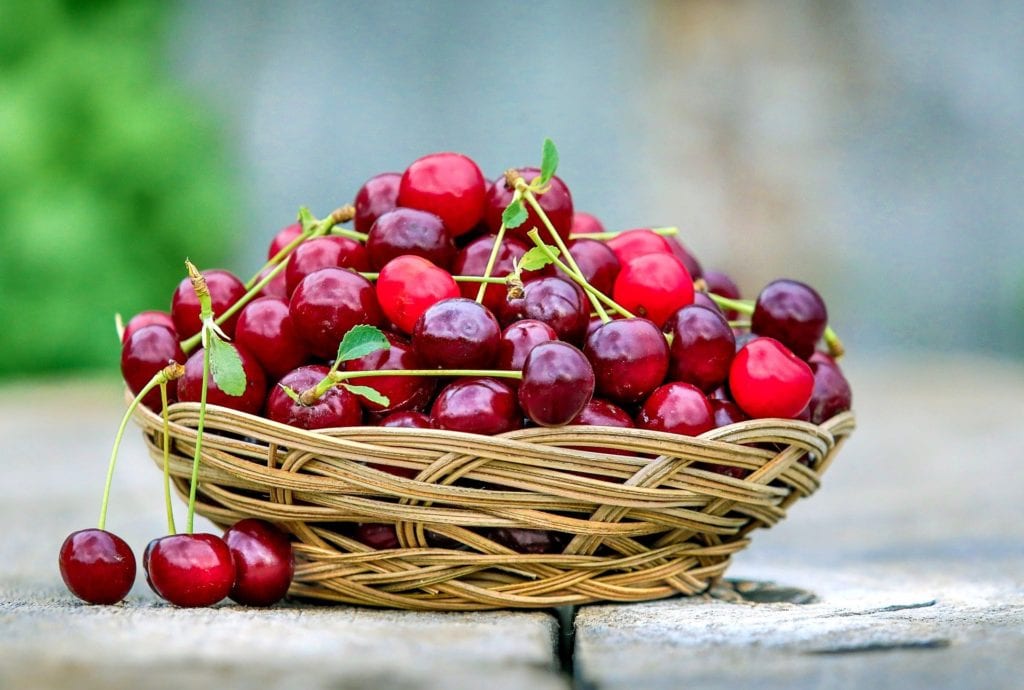
Cherry trees are a popular type of tree to add to your landscape because they produce plenty of tasty fruit that you can use in many recipes and even eat right off the tree. However, many people are surprised to learn that there are quite a few varieties to choose from, so if you are looking to get one for your property, keep reading while we look at several of them to spot the differences. We’ll give you a short description and a picture of each one so you can make an informed purchase.
 The 23 Types of Cherry Trees
The 23 Types of Cherry Trees
1. Beaulieu Cherry
The Beaulieu Cherry Tree is a fast-growing variety that is hardy and easy to grow in many climates. The cherries it produces tend to be ripe a little sooner than many other varieties, which is what makes them useful because many people prefer the flavor of other varieties. However, mixing this variety with others can make growing a tree quickly with better-tasting cherries much easier.
2. Benton Cherry
Farmers create the Benton Cherry Tree by mixing the Stella Cherry with the Beaulieu. The result is a tree with cherries that become ripe a little sooner than most others, and the cherries retain the sweet taste of the Stella variety. Many people like this variety because it’s easy to grow and produces plenty of great-tasting fruit. These trees are self-pollinating but yield more fruit near other cherry varieties that can help pollinate.
3. Bing Cherry
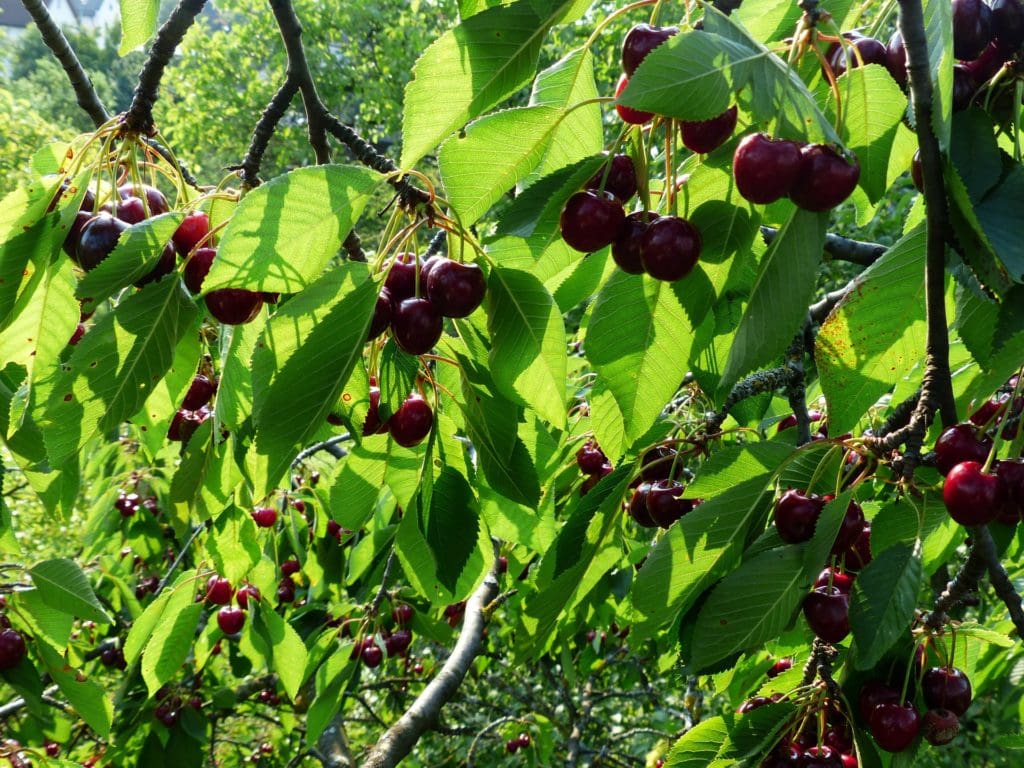
Bing Cherries are easy to grow in most of the United States, so they are quite popular and easy to find. The cherries they produce are large with a purplish tint, and they are usually available in the first year, unlike other varieties that can make you wait several years. It’s drought-resistant and able to adapt to various soil types.
4. Black Gold Cherry
The Black Gold Cherry is one of the most cold-resistant cherry trees, making them a great choice for growing in the northern United States. It’s self-fertile, so you can grow it alone on your property and still receive plenty of cherries to share with family and friends. It also does a great job of pollinating other varieties that are nearby.
5. Black Republican Cherry
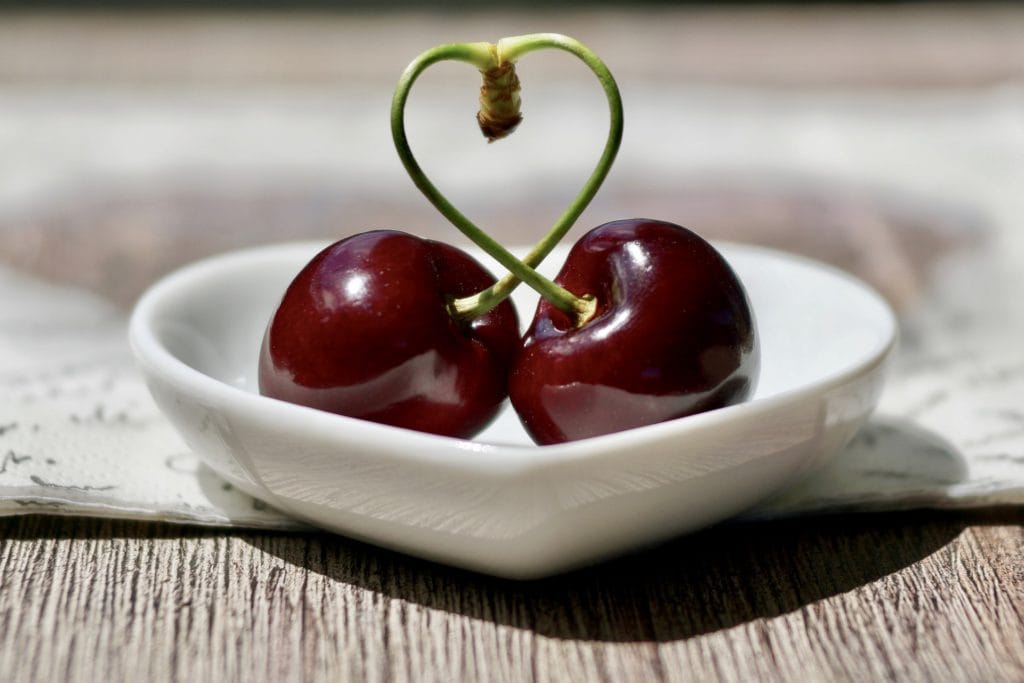
As the name suggests, the Black Republican Cherry tree produces very dark fruit. It has a sweet flavor that is popular in ice cream. It’s a medium-sized tree that needs to be near other varieties for pollination. It’s easy to grow in the United States and takes 2–5 years to produce fruit. The cherries keep well and are easy to ship.
6. Carmine Jewel Cherry
The Carmine Jewel Cherry Tree is a type of bush that remains close to the ground, so it’s a great choice for someone that doesn’t want to prevent any sunlight from getting into the yard. It’s a mixed breed, and a single shrub produces enough cherries for the average household, and it has attractive flowers in the early spring that many people enjoy. It’s extremely hardy and grows well in the United States.
7. Early Richmond Cherry
The Early Richmond Cherry Tree is an extremely sturdy tree that grows well in many different climates, so it’s quite popular in the United States. It’s also a heavy producer, often providing growers with more fruit than they can eat, making it a profitable variety. It grows at a medium rate and enjoys full sun.
8. Emperor Francis Cherry
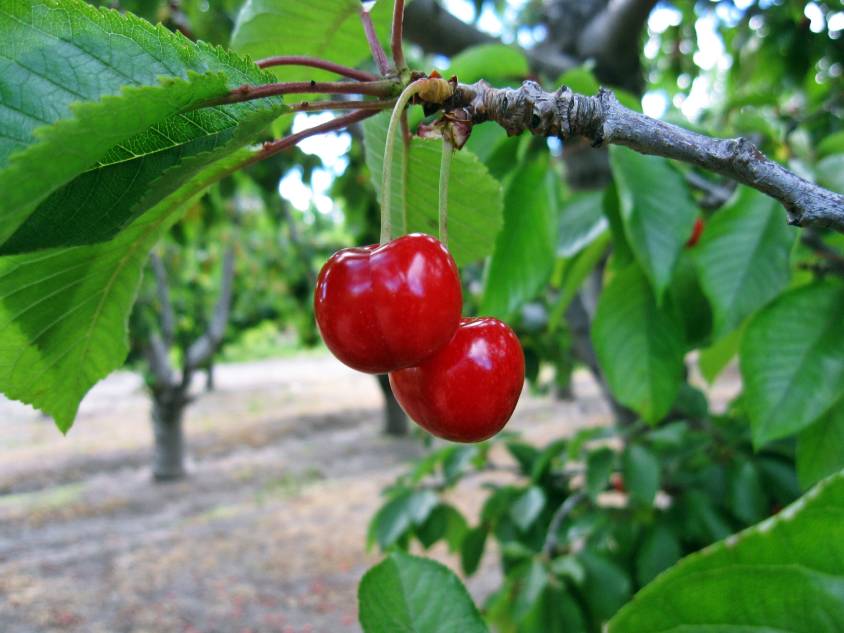
Emperor Francis Cherries are one of the sweetest varieties you can grow, and many growers use the fruit to make homemade maraschino cherries. They are also popular in jellies and candies so they can be quite profitable. However, they are temperamental about their growing conditions and may be better suited to someone with experience maintaining the proper soil moisture and pruning.
9. Higan Cherry
The Higan Cherry tree is as popular for its attractive pink blooms in early spring as for its tasty cherries. It’s a medium-sized tree that grows faster and lives longer than many other varieties, and it’s also tolerant of hot and cold weather. It’s disease-resistant and enjoys plenty of sunlight.
10. Lambert Cherry

The Lambert Cherry is one of the most productive in the world, and farmers have been using it to turn a profit for more than 150 years. It grows large dark red cherries and likes to see at least 12 hours of sunlight each day and requires well-drained soil to grow best. It’s easiest to find in the Pacific Northwest.
11. Lapins Cherry
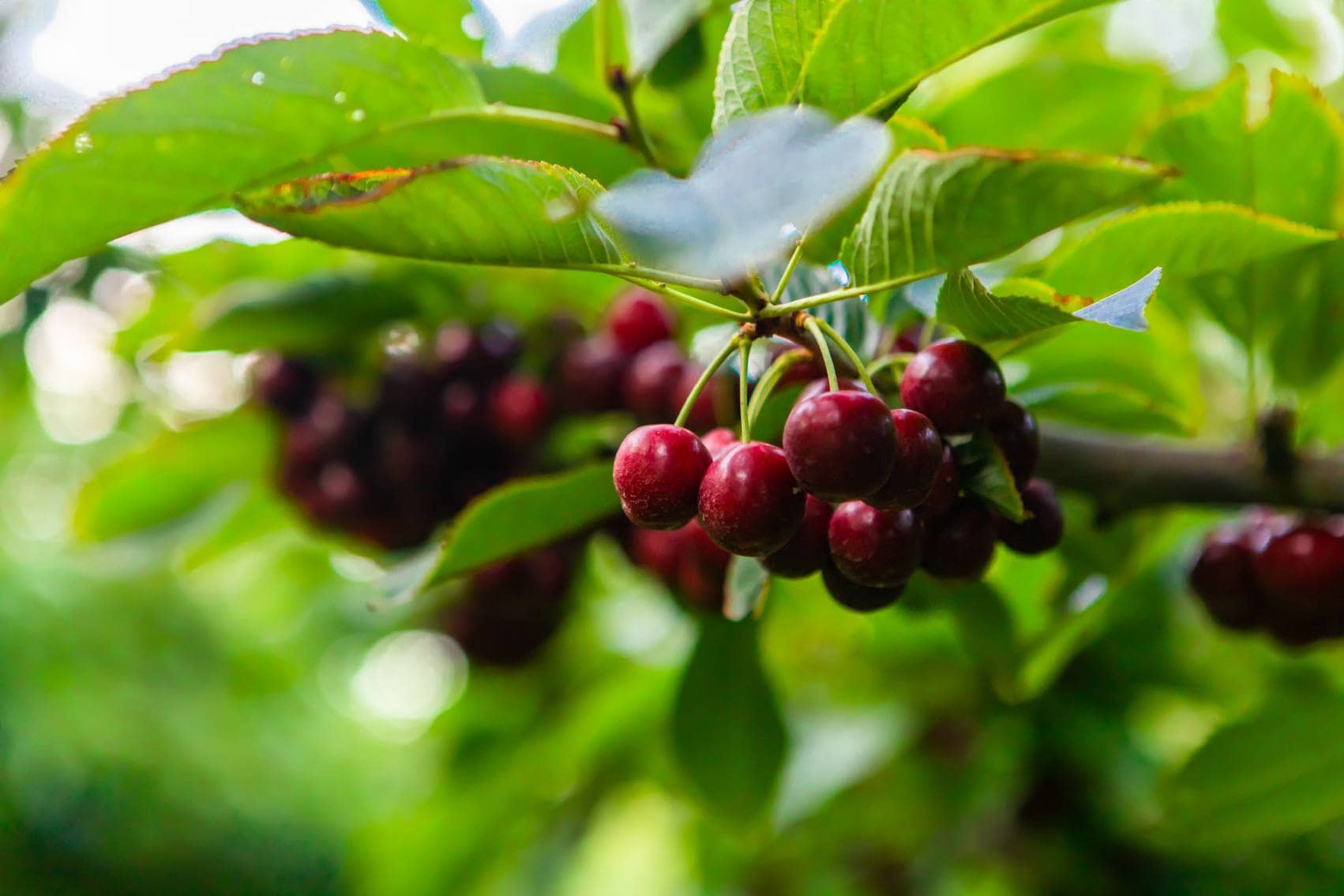
The Lapins Cherry Tree is self-fertile, so it’s a great variety if you can only have one tree on your property and you don’t have any other cherry trees nearby. It grows quickly to about 40 feet, and the cherries are resistant to cracking, so you get a bigger harvest.
12. Meteor Sour Cherry
The Meteor Sour Cherry Tree produces wonderfully sour cherries that many people enjoy for pies and other desserts. Many growers recommend growing it along with a Montmorency Cherry Tree for plenty of cherries that are perfect for baking. This tree has white flowers in the spring and is tolerant of many different soil types. It is an excellent tree for colder climates as it can survive temperatures at -50 degrees Fahrenheit.
13. Montmorency Cherry
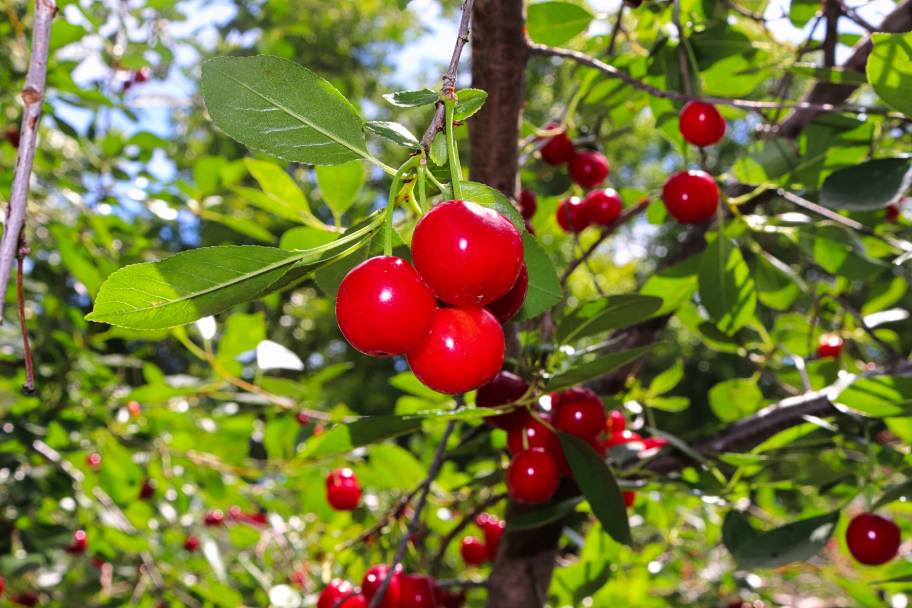
The Montmorency Cherry Tree is another tree that grows sour cherries perfect for baking. In fact, it’s the most popular cherry to use in pies in the United States. It pairs well with the Meteor Shower Cherry Tree. It’s a self-fertile and hardy tree that enjoys plenty of sunlight. The cherries are bright red, and the leaves are dark green and leathery.
14. Nanking Cherry
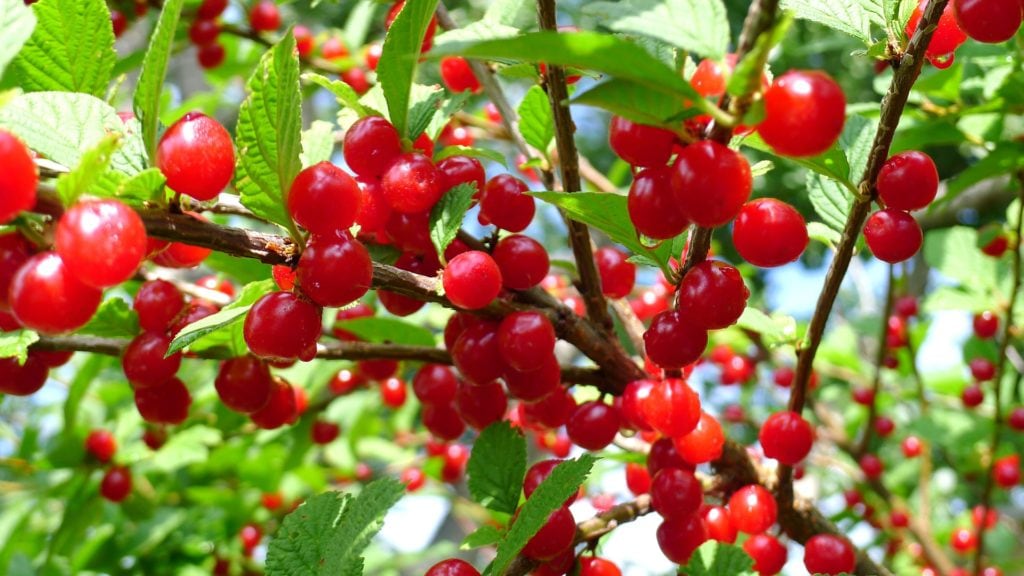
The Nanking Cherry is a fast-growing shrub well suited for colder climates. It’s perfect for a smaller yard or one that would lose too much sunlight with a full-grown tree, and it produces plenty of cherries. It’s a fantastic windbreaker, and the cherries attract many songbirds. The only downside is that it is one of the shortest-lived varieties on this list.
15. North Star Cherry
The North Star Cherry is a dwarf cherry and usually stands less than 10 feet tall. The cherries are dark red and have a strong flavor, so many people enjoy eating them right off the tree. It’s a hardy tree that can handle the cold weather, and it doesn’t require a lot of pruning or maintenance, so it’s a great choice for many people. The shorter height also makes it easy to pick the cherries.
16. Rainier Cherry
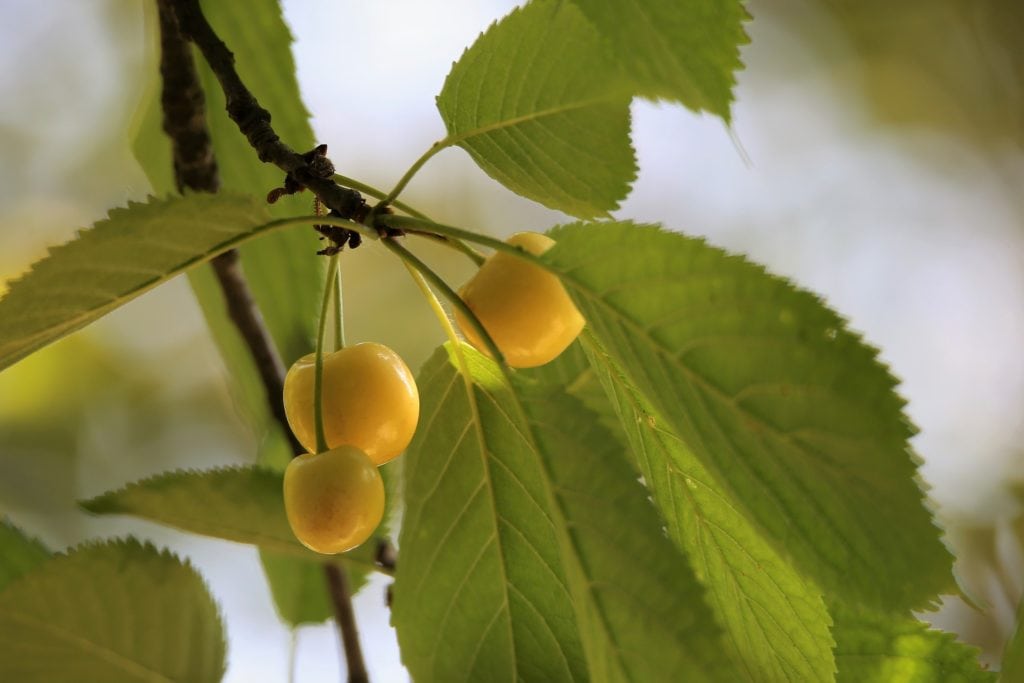
Rainier Cherry Trees are another popular variety in the United States, and many people describe their fruit as having a sweet and zesty flavor. The cherries are bright red and yellow, and the tree produces a large amount each year. It’s another small tree that is easy to pick the fruit from, but it bruises easily, so it is hard to transport.
17. Regina Cherry
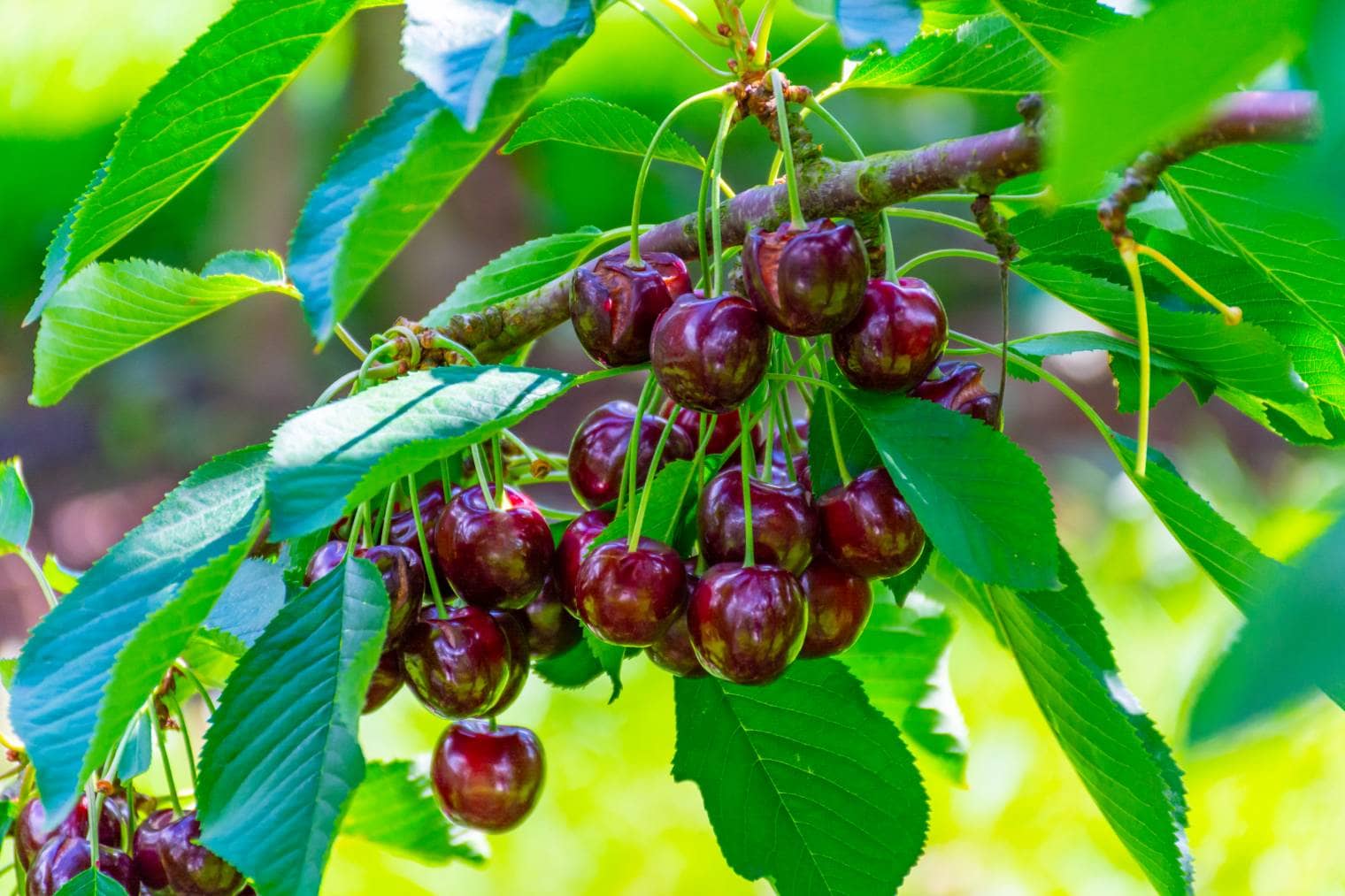
The Regina Cherry is popular in the United States because the fruit resists cracking, which means you get more off the tree, and they are more likely to reach their destination when shipping. The flavor changes as the colors do, so you can pick them when they are bright red for pies or let them get dark for a sweeter taste.
18. Stella Cherry
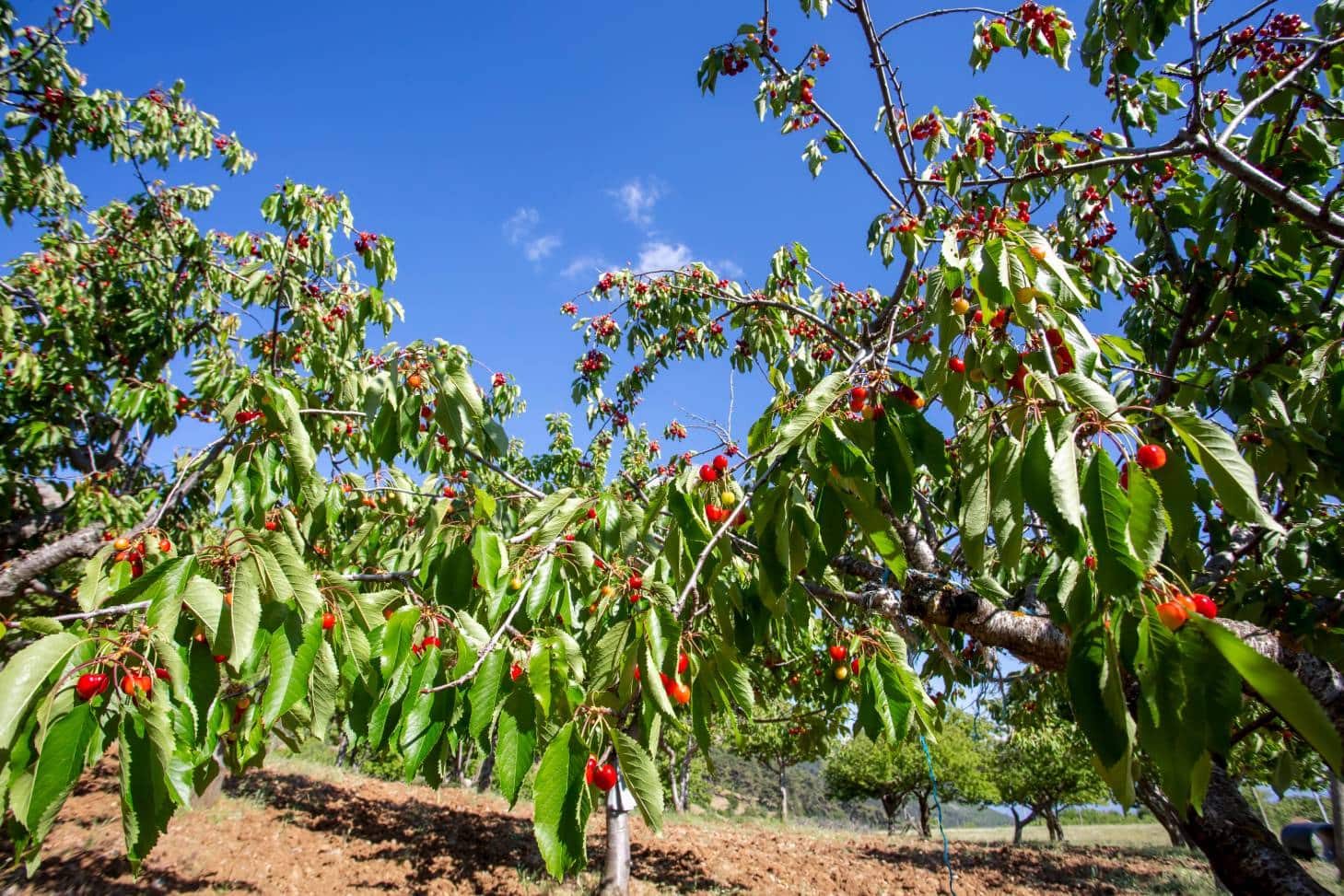
The Stella Cherry Tree is self-pollinating, so it’s perfect for landscapes that call for a single tree. It works well as a garden ornament and produces bright red cherries perfect for baking or eating. It may take a few years to produce fruit, but it doesn’t require any pruning, so it is ideal for beginners.
19. Sour Cherry
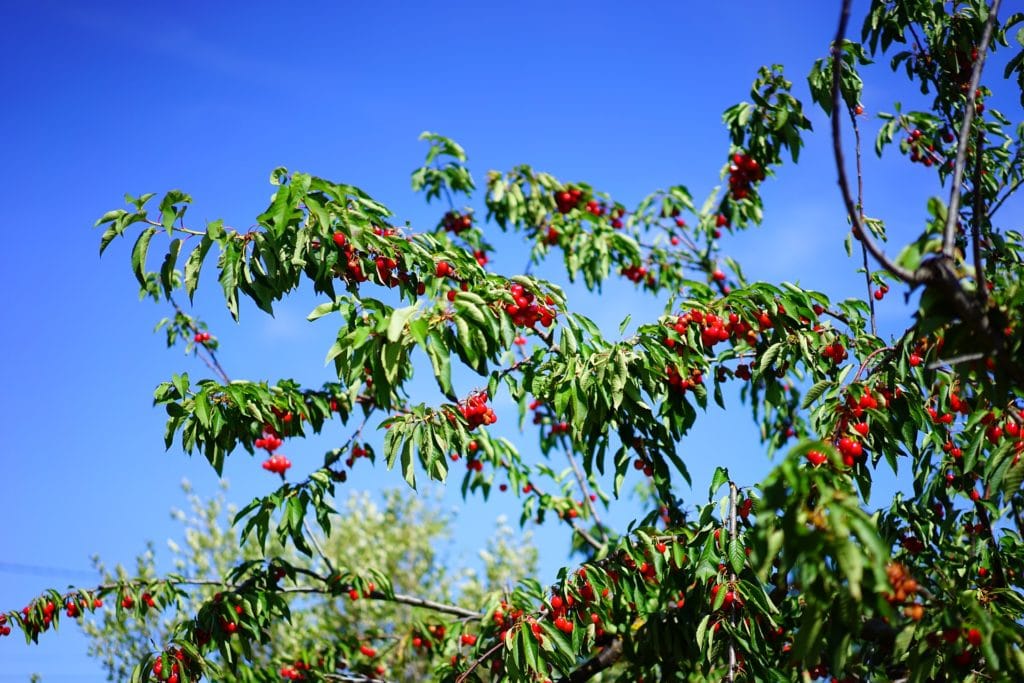
The Sour Cherry Tree is a variety that produces plenty of fruit without the need for cold weather like many of the other cherry trees on this list, so you can find it in more southern states in the United States like California and Colorado. As the name suggests, the cherries it produces are small, red, and sour, so they are perfect for jellies and pies.
- You might also like: 20 Types of Trees in Colorado (with Pictures)
20. Sunburst Cherry
The Sunburst Cherry is quite large, making them easy to harvest, and the flavor is sweet with a hint of cherry. It’s a hybrid of two sweet-tasting varieties making the fruit perfect for picking and eating. Once the cherries reach a dark red color, it’s time to pick them, so it’s ideal for new growers.
21. Tulare Cherry
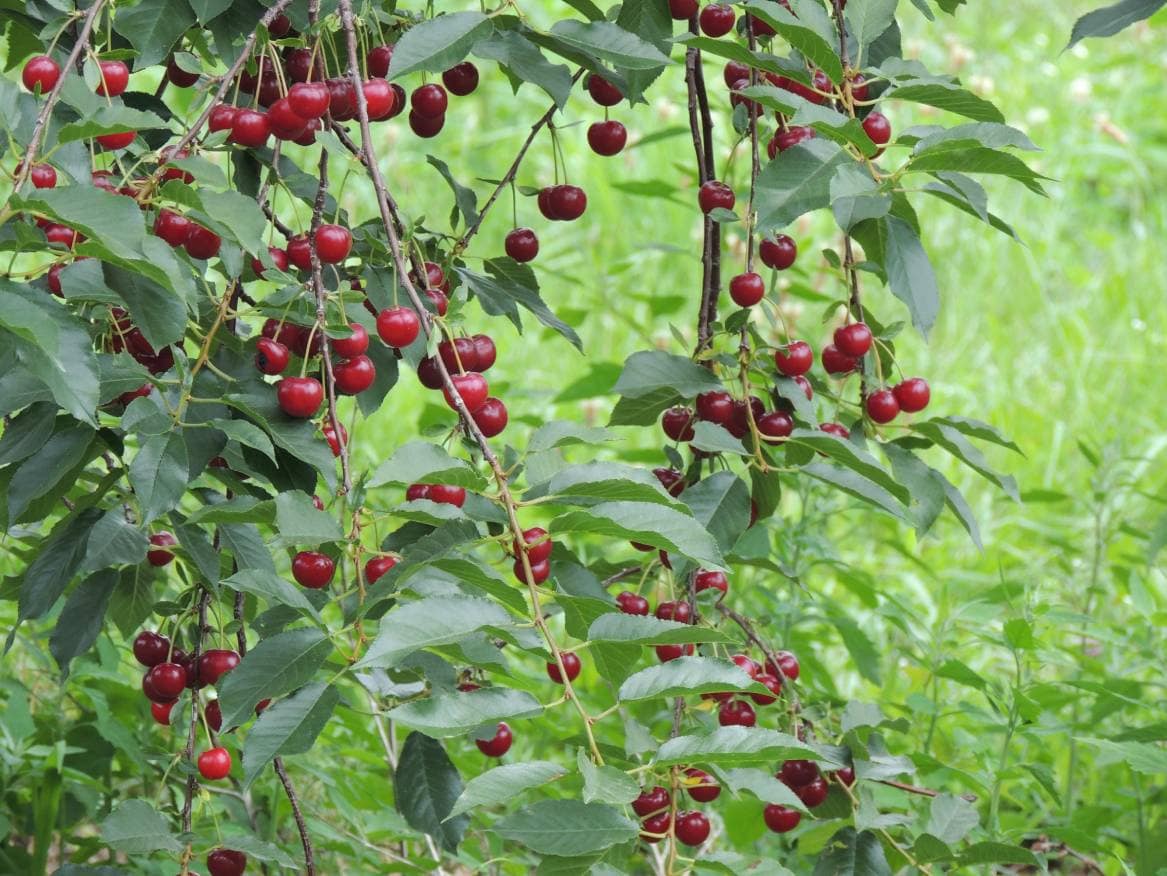
The Tulare Cherry Tree is a newer variety that breeders created to have a cherry that stores longer and holds up better during shipping. It grows across most of the United States and is well suited to the southern states as it only requires a few cooler hours per year to produce plenty of fruit.
22. Whitegold Cherry
The Whitegold Cherry is an extremely sweet-tasting variety that takes a few years to produce fruit but is well worth the wait. It requires plenty of sunlight and well-draining soil along with yearly pruning, so it’s better suited for experienced growers.
23. Yoshino Cherry
The Yoshino Cherry Tree is the choice of growers that are more interested in the renowned flowering ability of this variety than the cherries. It can grow to 50 feet tall and is tolerant of different soils as long as it has plenty of sunshine. It’s also a popular variety among bird watchers as it’s a great source of food for the robin, cardinal, and other popular birds.
 Summary
Summary
As you can see, there are plenty of different varieties, and the one you choose will depend on how you are going to use the fruit. If you enjoy baking, choose one of the sour varieties, as these cherries tend to taste better cooked. If you like to eat the cherries fresh or use them to make candy, you likely want one of the sweeter varieties. Another major concern is if the tree is self-pollinating. If you have a small yard, you will likely want a self-pollinating variety, but if you have plenty of space, a few trees can help you receive a larger harvest from all of them.
Related Reads:
- Which Fruits Are Best For Juicing?
- Do Cherries Grow on Cherry Blossom Trees?
- 20 Different Types of Apple Trees
Featured Image Credit: svklimkin, Pixabay
Contents
 The 23 Types of Cherry Trees
The 23 Types of Cherry Trees